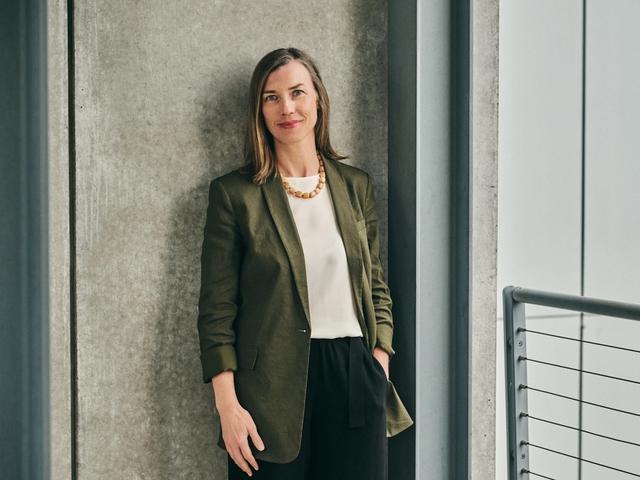“Have you seen [insert title of museum exhibition here]?”
“No, I haven’t seen it yet. When does it close?”
“Sunday.”
“Oh, darn. I think I’m going to miss it.”
How many times have you had this conversation? I, for one, have lost count. Over the past two decades, the art world has expanded dramatically, and museum programming has ballooned along with it. More exhibitions. More public programmes. More acquisitions. More, more, more.
But in recent years, perhaps without audiences even realising it, some institutions have begun to push against the grain. As staff members experience burnout, shipping and storage become costlier than ever and leaders face pressure to adopt more environmentally sustainable practices, museums are questioning long-held industry standards. Why close an exhibition that took three years to put together after just three months? Is it worth it to acquire, store and preserve 500 works from a donor when the curatorial team only actually wants two of them? Perhaps it is time, some experts say, to embrace a slower museum model.
Slowdown predated the pandemic
While the Covid-19 pandemic sparked a culture-wide reckoning with the frantic pace of contemporary life, some museums began to pull their foot off the gas even before the world went into lockdown. The Solomon R. Guggenheim Museum in New York, for example, opened 12 exhibitions in 2013; five years later, that number had fallen by half. Naomi Beckwith, the Guggenheim’s deputy director and chief curator, says that when she arrived at the institution in 2021, “the slowdown had happened—I wanted to codify it”.
Moving forward, Beckwith intends to pare down the schedule even further, holding two rather than three exhibitions per year in the museum’s sprawling rotunda. She is also considering interspersing exhibitions in smaller galleries with “research and special presentations that might not be open to the public”.
For the Guggenheim, whose audience is mostly tourists, this strategy is practical. “The pattern in visitorship isn’t around exhibitions opening—it’s seasonal,” Beckwith says. In other words, it is more important for the museum to put its best foot forward during peak periods, like the winter holidays and spring break, than it is to constantly turn over exhibitions.
The calculus is slightly different for institutions that rely less on tourism, like the Carnegie Museum of Art in Pittsburgh. Eric Crosby, the museum’s director, says that when he worked as a curator at the Carnegie between 2015 and 2020, it held around ten exhibitions annually; last year, it hosted six. Each show, he says, is now “programmed in greater depth from open to close”. That means more docent tours, family workshops and professional-development opportunities for staff. Crosby wagers that this approach is just as, if not more, appealing to local audiences as a rapidly changing exhibition schedule.
“We have decided to reinvest in our engagement with the community, the collection as an evergreen asset that is there to support the community, longer-term conversations with artists and deeper art-historical research,” Crosby says. “That also brings visitors back. It’s not just the pursuit of the new.”
Crosby has a similar less-is-more attitude towards acquisitions. “The museum was acquiring more than it could process, research and present,” he says, “and that was, in large part, because the curators were all working independently.” Under his leadership, curators must determine their collecting priorities as a group. This “slows down the process”, he says, but also makes it “smarter and deeper, because it’s collective”.
Moderating the pace of collecting
Kim Conaty, the new chief curator of the Whitney Museum of American Art in New York, has also expressed a desire to moderate the pace of collecting. “Gifts are not free,” she told the New York Times in April, referring to the cost of storing and preserving works of art. “We’re being extremely intentional about how we’re building the collection.” (The Whitney has already reduced the pace of its exhibitions. In 2016, the year after it moved into its expanded Meatpacking District home, it hosted 22 shows; last year, it held 13.)
In order for an industry-wide slowdown to be sustainable, museums have to convince patrons and foundations that standard operations are just as worthy of funding as splashy, public-facing projects. “All funders need to give people wind behind them, and not necessarily show up for the funding of an exhibition or acquisition but to say, ‘I am offering you resources, because I trust you are uniquely well-positioned to guide us and what you need is flexible funding,’” Deana Haggag, a programme officer at the Mellon Foundation, said during the recent Talking Galleries symposium in New York.
Of course, the slow-museum model will not please everyone. Curators may be upset that they must wait five years or more to get an exhibition on the calendar. Artists may resent that there are fewer opportunities to show. Collectors may be frustrated that museums will not as willingly accept their art donations. Registrars and art handlers may be concerned that their jobs will be minimised or cut.
These are valid anxieties. But doing less in one arena also creates the opportunity to do more in another. If they are not processing loans, registrars can take stock of collections in more depth or enrich their data-collecting practices. Museums can engage artists, curators and the public in more meaningful conversations. (Collectors and patrons stand to benefit least from this change—but perhaps they will be encouraged to become more deliberate about their own purchases.)
“Just because we do fewer exhibitions, it doesn’t mean work is slower,” Crosby says. “Museum people tend to fill their bandwidth. It just allows a little more choice rather than a sequence of fire drills.”



